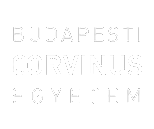Dorgai, Ilona (2001) A részvényesi értékmaximalizálás elméleti háttere ----- Its title in English: The theoretical background of shareholders' value maximization. Műhelytanulmány (working paper). Vállalatgazdaságtan Tanszék, Budapest.
|
PDF
- Requires a PDF viewer such as GSview, Xpdf or Adobe Acrobat Reader
306kB |
Absztrakt (kivonat)
A tanulmány célja a részvényesi értékmaximalizálás vállalatelméleti hátterének rövid áttekintése, a részvényesi érték defíniálása és a koncepció alkotóelemeinek a bemutatása. Az első fejezet a részvényesi értékmaximalizálás vállalatelméleti hátterét ismerteti kiindulva a neoklasszikus elméletből, összefoglalva a megbízó-ügynökelméletet, utalva a felelős vállalat koncepció kialakulására és a modern vállalati pénzügyek fejlődésére. Az Egyesült Államokban az 1980-as években a vállalatok teljesítményének és piaci értékének kapcsolatára vonatkozó elemzések a részvényesi érték maximalizálásának a fontosságára helyezték a hangsúlyt. 1986-ban több szakfolyóirati publikációt követõen jelent meg Alfred Rappaport, Creating Shareholder Value, The New Standard for Business Performance című könyve, amely a részvényesi érték szemléletmód alapjait tartalmazza. Ezt követően az Egyesült Államokban, Nyugat-Európában és Ausztráliában is több publikáció jelent meg a témában bemutatva a részvényesi értékmaximalizálás elveinek gyakorlati alkalmazását, az empirikus kutatások eredményeit. A második fejezet a fogyasztói értékből kiindulva a vállalati érték meghatározásán keresztül definíálja a részvényesi értéket és bemutatja miért az érték – cash-flow – a legjobb teljesítménymérce, levezetve a szabad cash-flow egy lehetséges felépítését. A harmadik fejezet defíniálja az értékteremtő folyamatok és értékteremtő tényezők fogalmát, bemutatva a Rappaport által meghatározott hét makro értékteremtő tényezőt, azok rövid jellemzését, a részvényesi értékteremtés hálóját, az értéklánc és a cash-flow kapcsolatát. ------------------------------- The aim of this essay is to summarize the theory of shareholder value maximization, to define the shareholder value and present the elements of the theory. Chapter 1 demonstrates the theory of shareholder value maximization based on neoclassical theory summarising the principal-agent theory and with a reference of the development of moral firm concept and of the development of modern corporate finance. In the 1980s in the USA, essays dealing with the relations of the market value and company performance emphasized the importance of shareholder value maximalization. After numerous surveys, in 1986 a book of Alfred Rapaport „Creating Shareholder Value, The New Standard for Business Performance” was published, containing the basics of shareholder value approach. After this book more essays were published in United States, Western Europe and Australia providing an introduction to the practical usage of shareholder value theory summarising the results of empirical research. Chapter 2 defines shareholder value through corporate value using customer value as the basis, and demonstrates why value (discounted cash-flow) is the best metric as well illustrating a possible composition of the elements of free cash-flow. Chapter 3 defines the concepts of value activities and value drivers presenting seven macro value drivers and their short description developed by Rappaport, the Shareholder Value Network and the link between Value Chain and Cash-flow.
| Tétel típus: | Monográfia, jelentés (Műhelytanulmány (working paper)) |
|---|---|
| Kulcsszavak: | Értékteremtő tényező, Részvényesi értékteremtés hálója, Szabad cash-flow, Value Driver, Shareholder Value Network, Free Cash-flow |
| Témakör: | Pénzügy Vállalati vezetés |
| Azonosító kód: | 31 |
| Feltöltő: | Andrea Faragó |
| Elhelyezés dátuma: | 21 Máj 2007 |
| Utolsó változtatás: | 01 Júl 2016 04:03 |
Csak a repozitórium munkatársainak: tétel módosító lap

